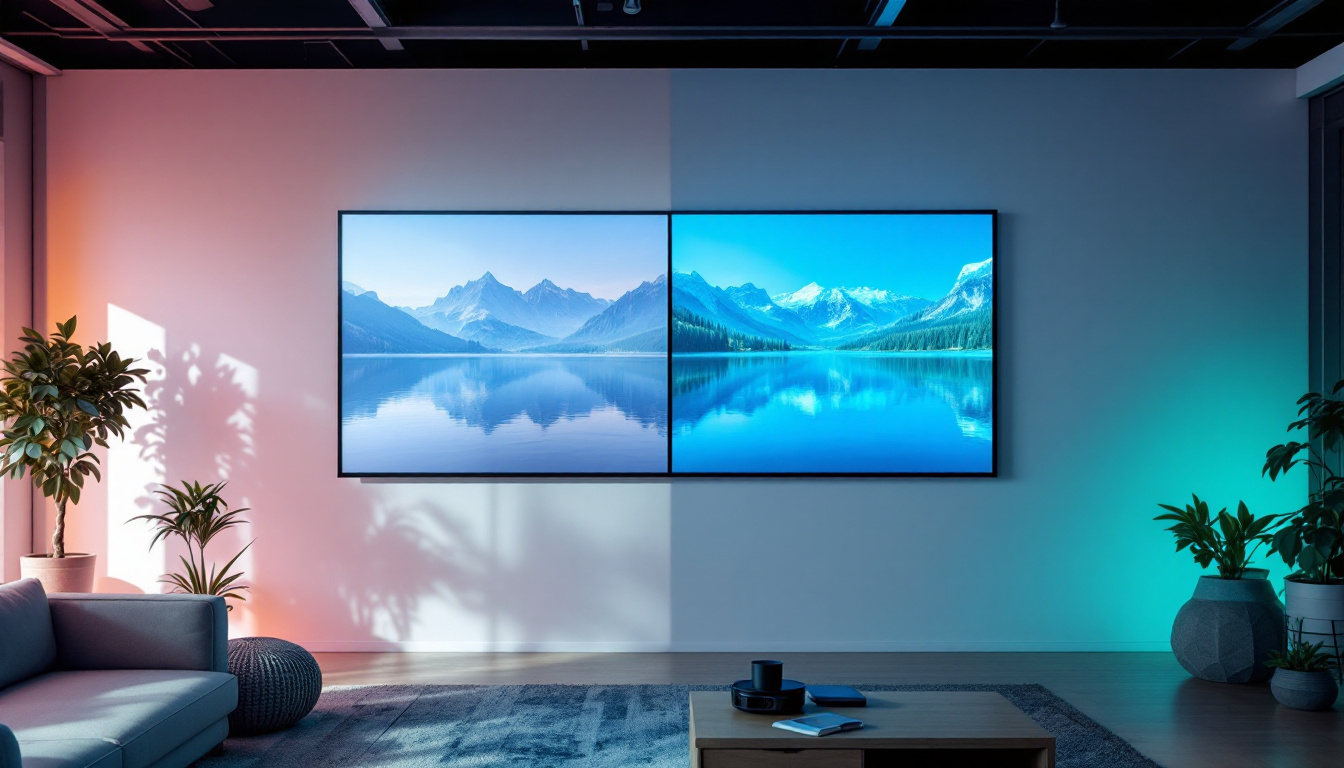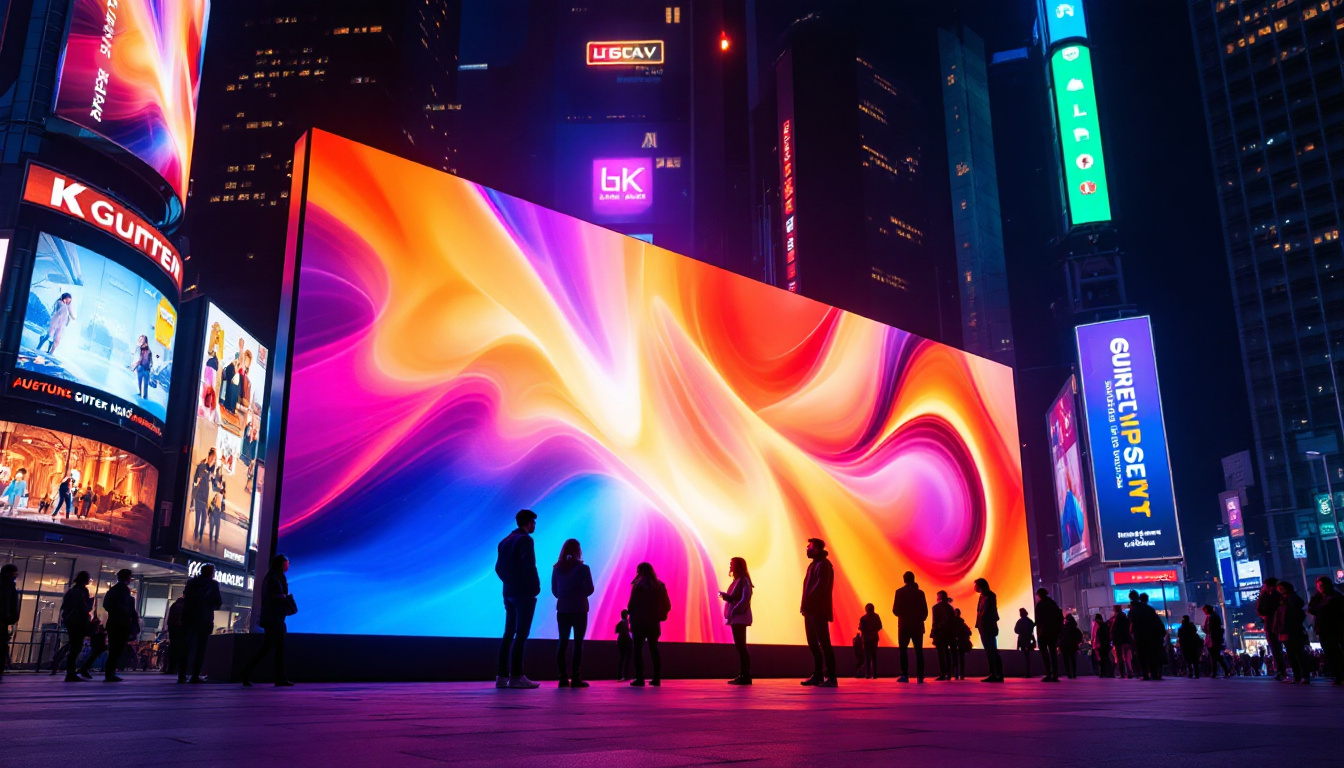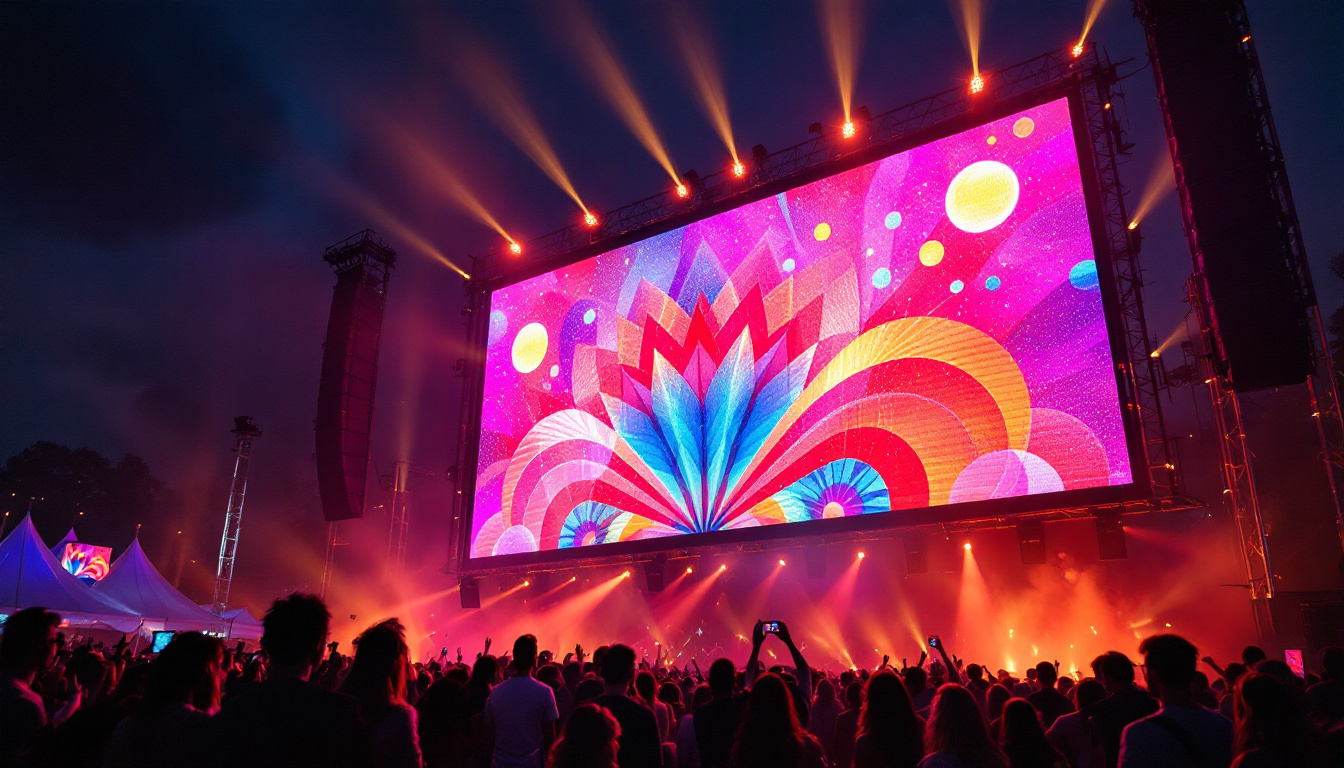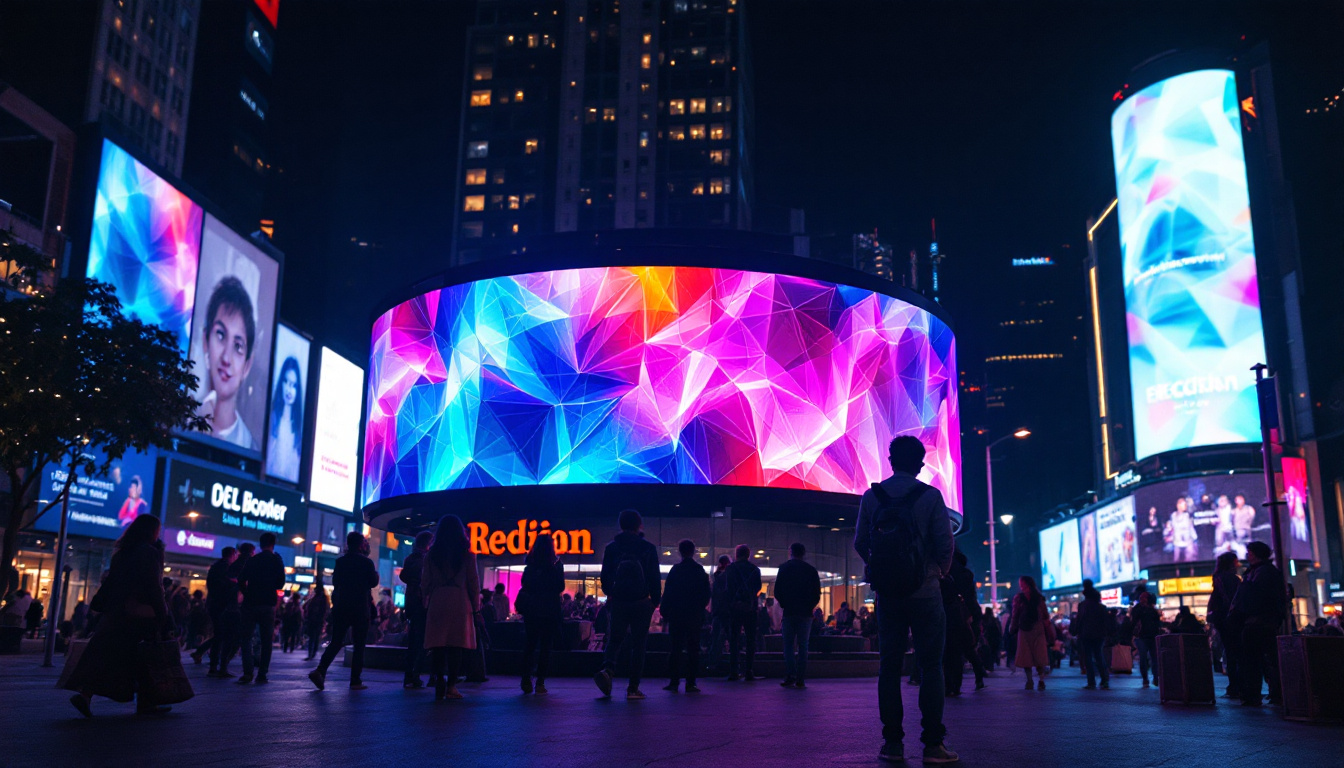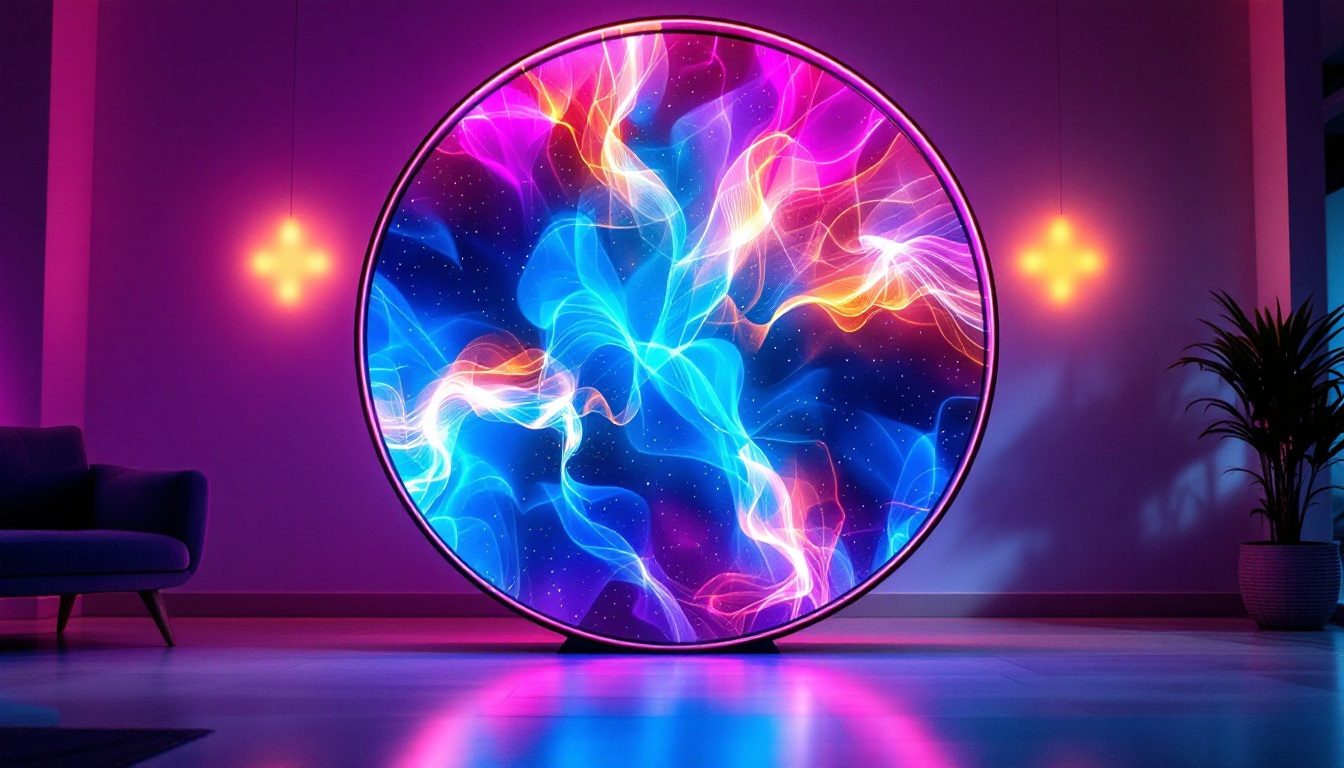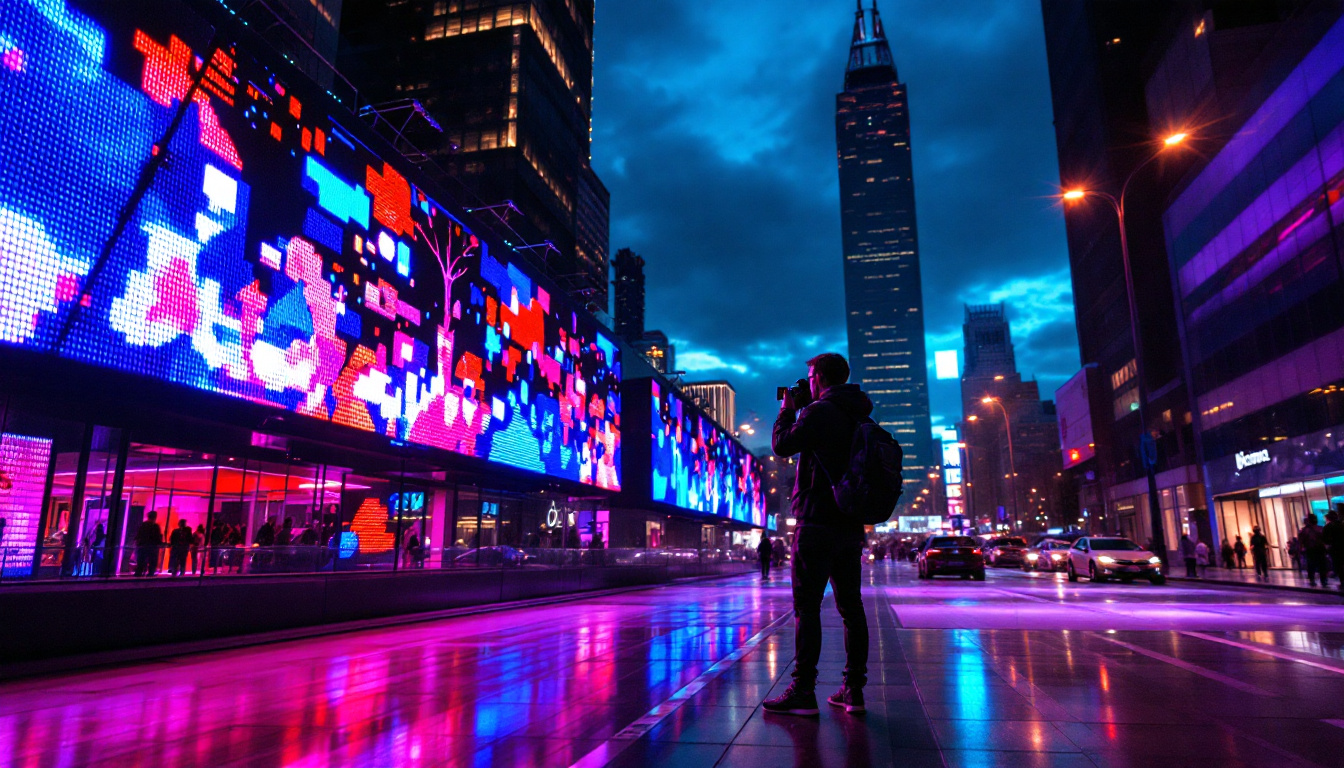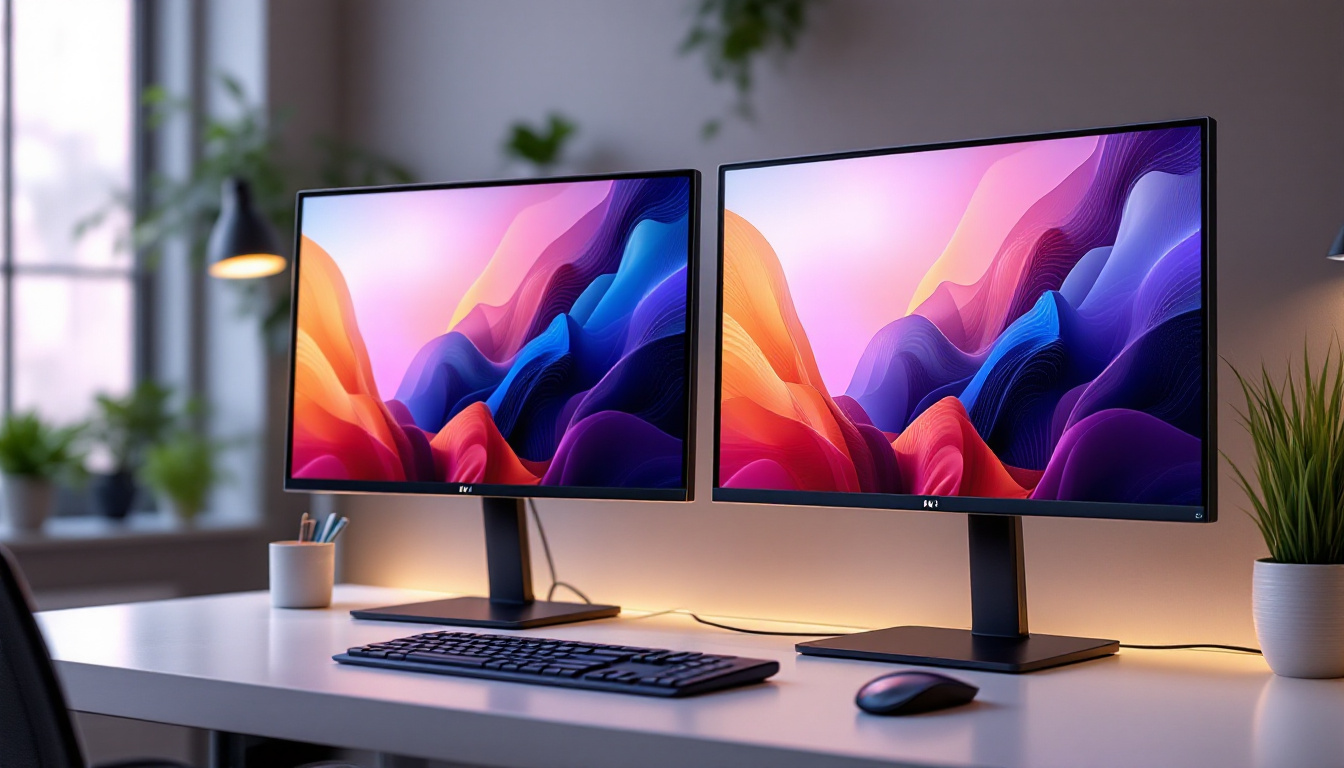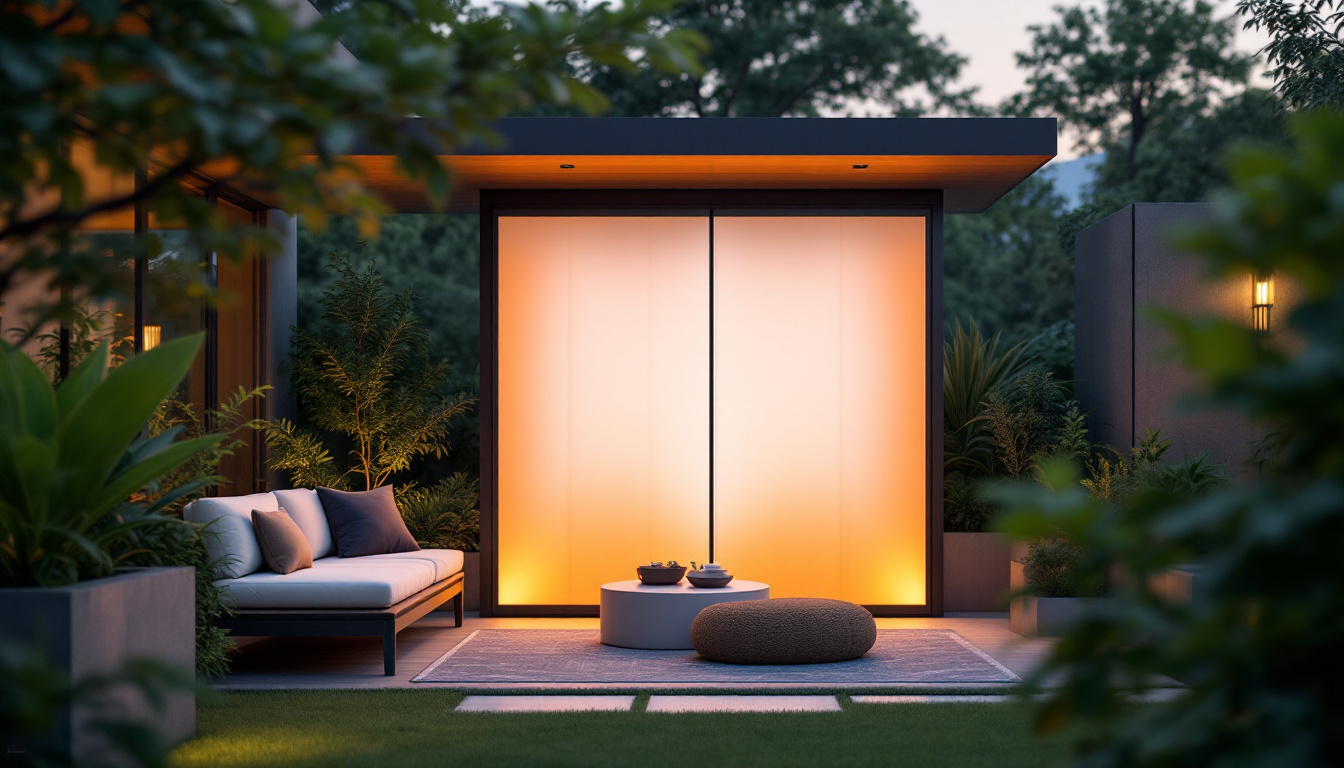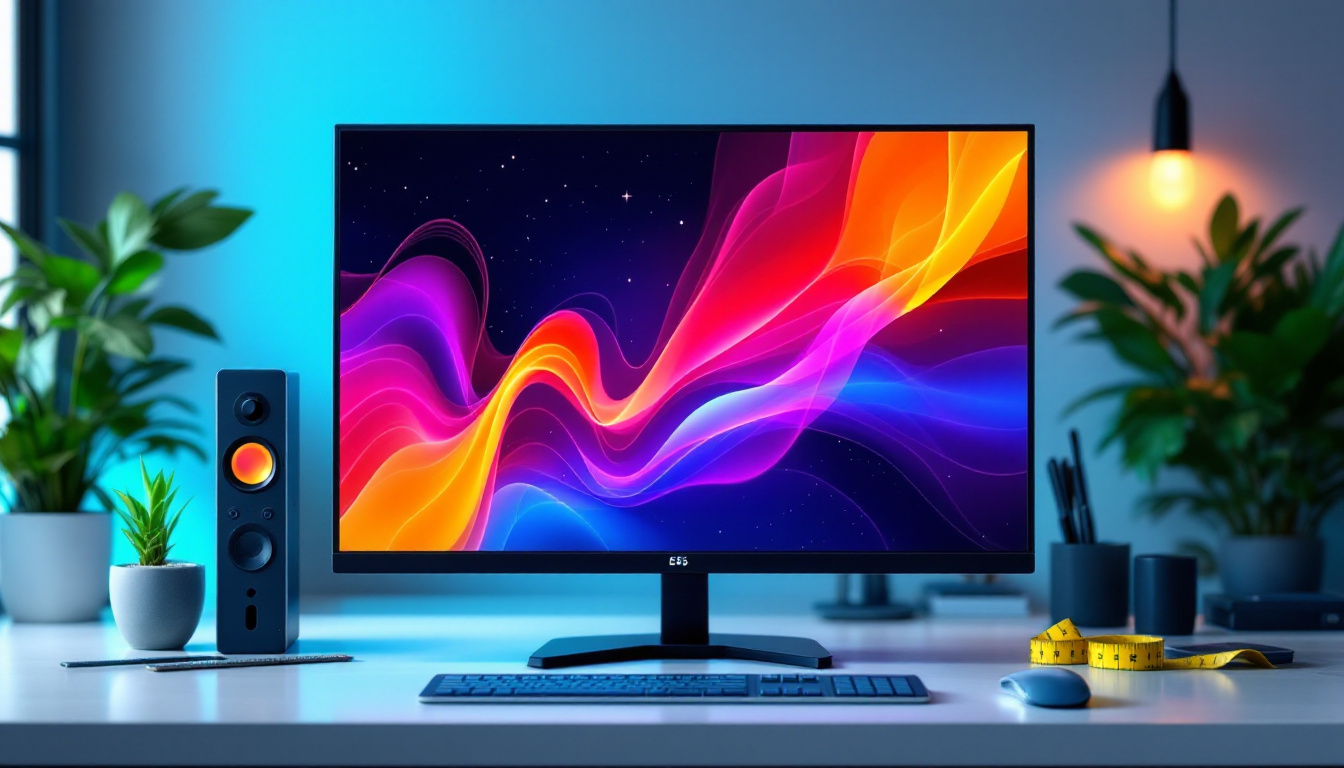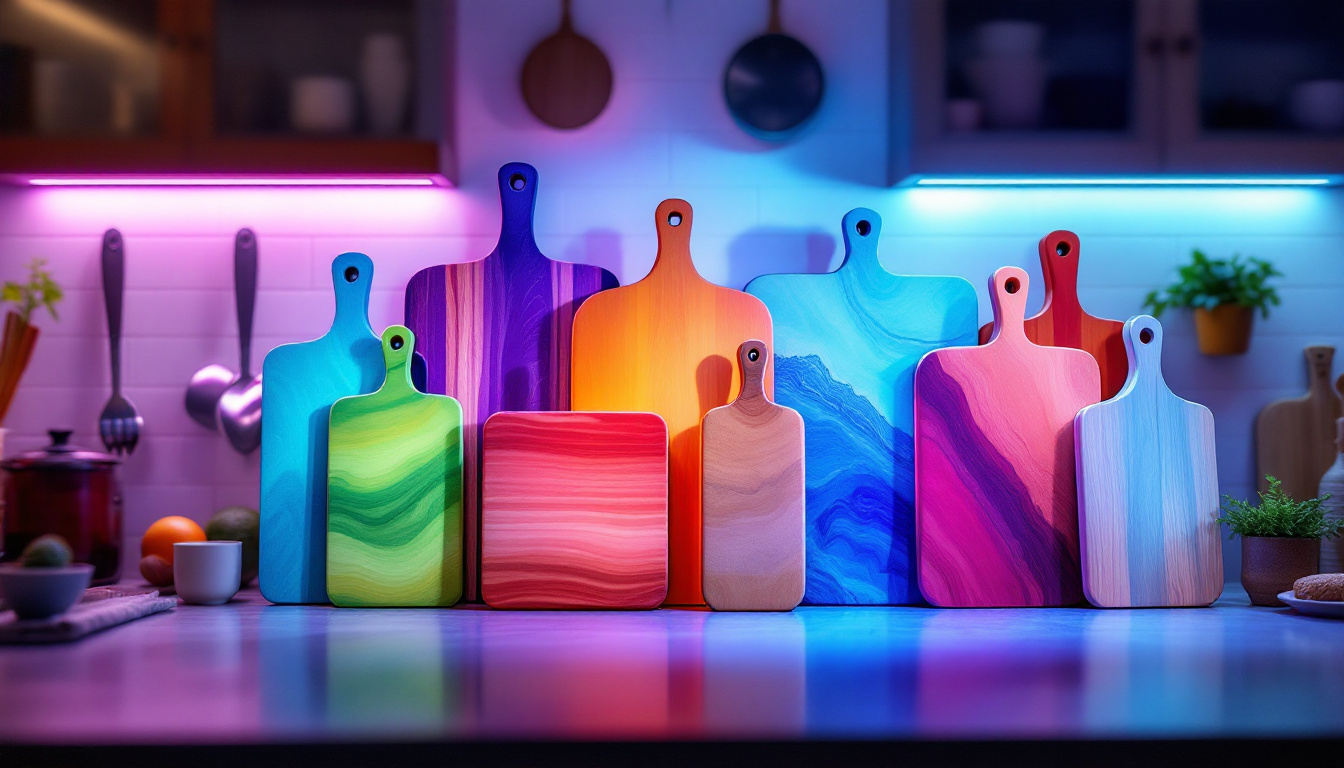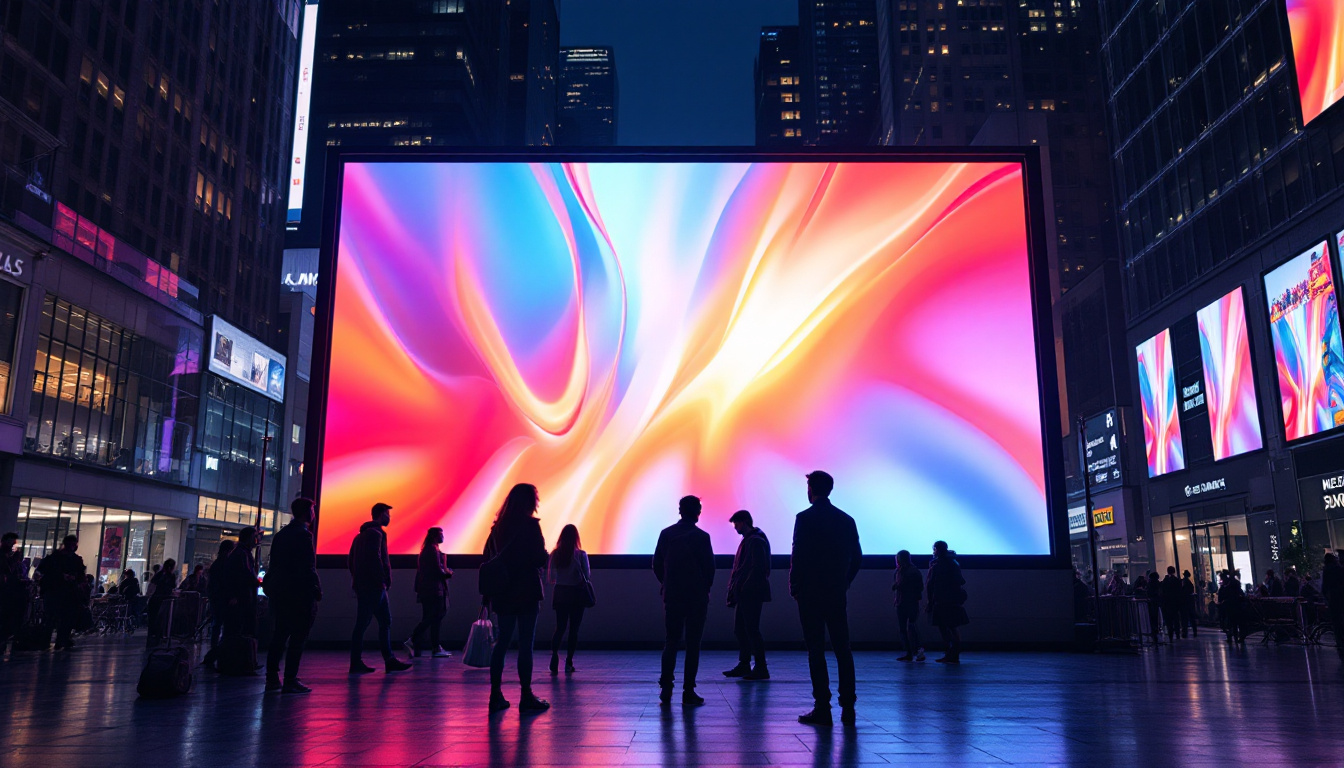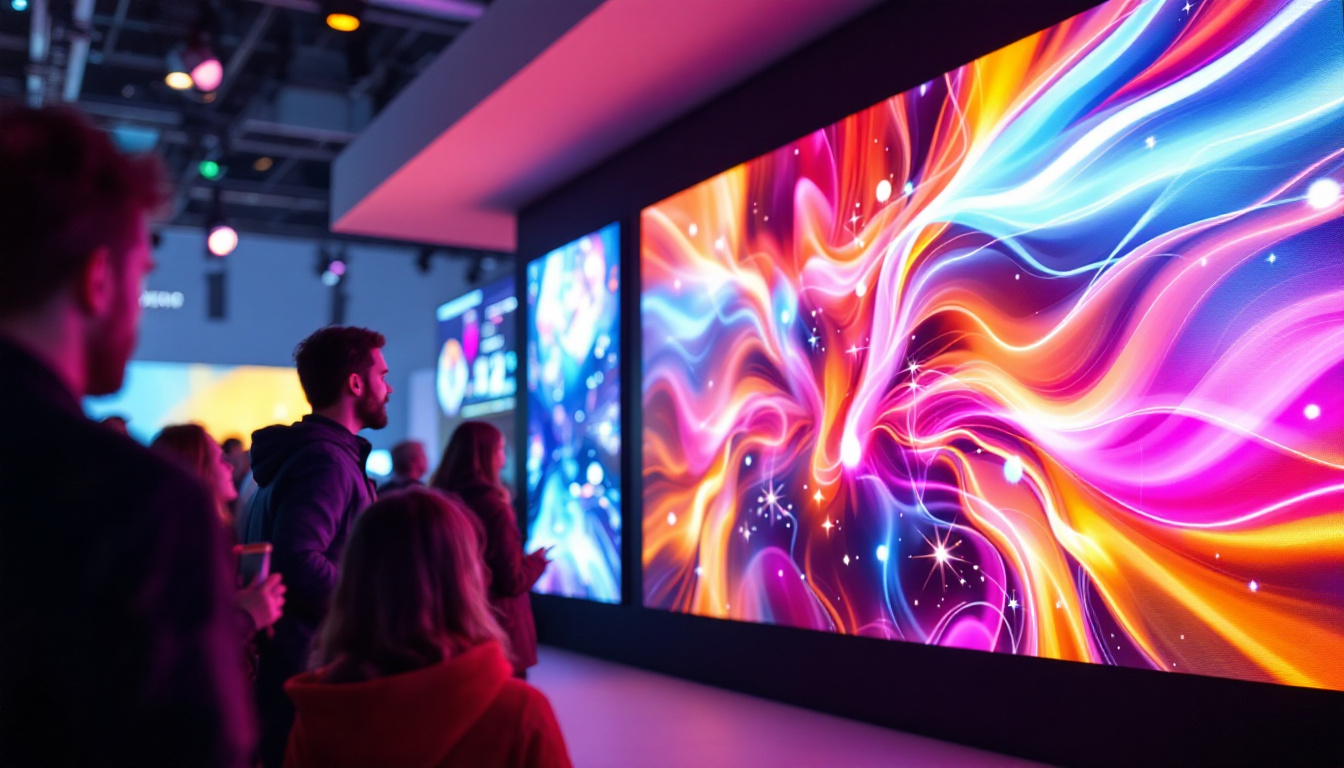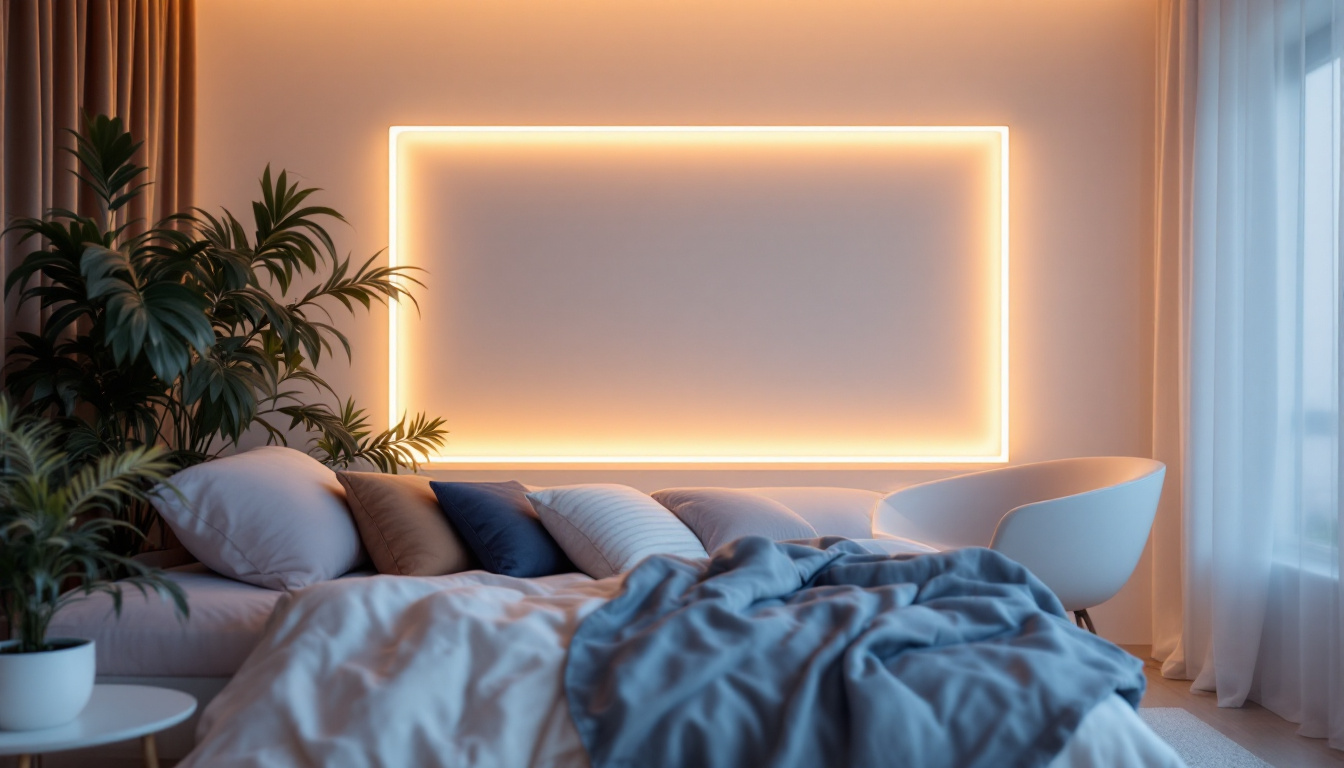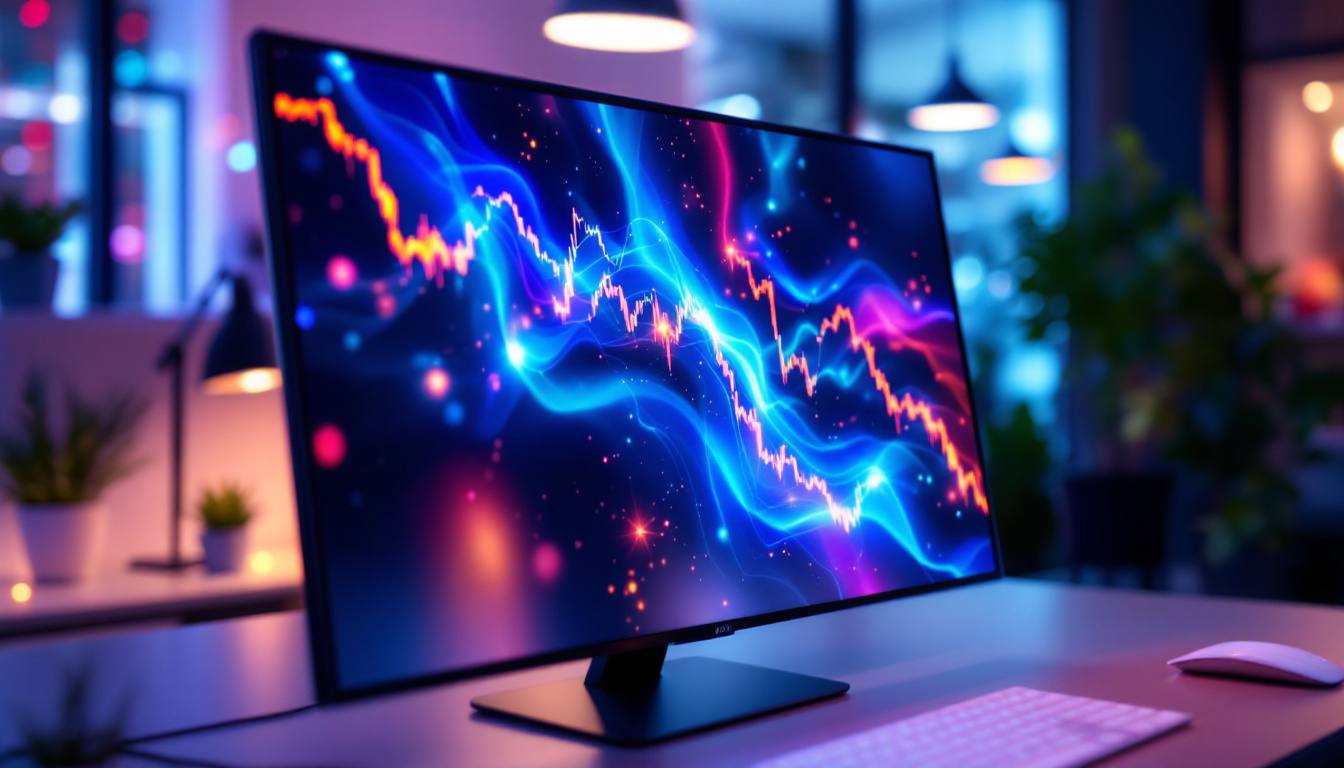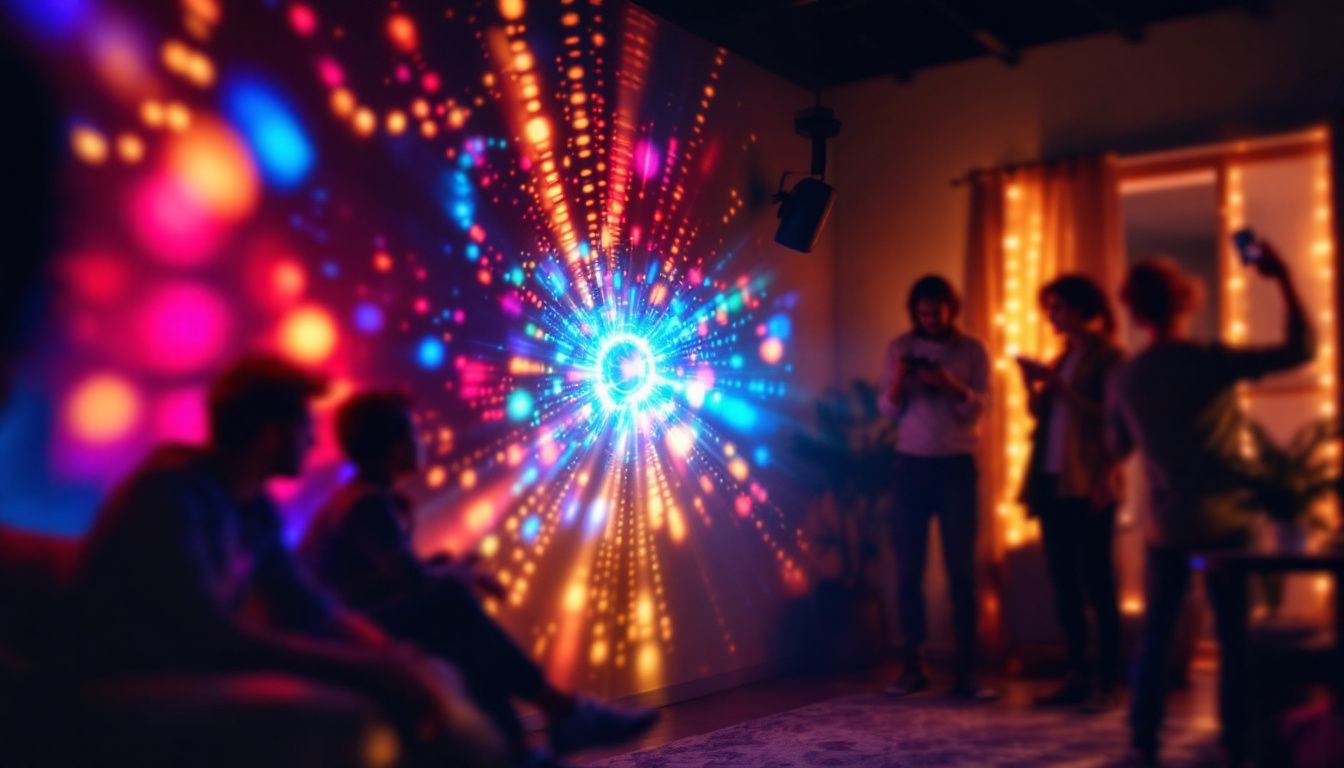In the world of visual displays, the choice between a projector screen and a white wall can significantly impact the viewing experience. With advancements in technology, particularly in LED displays, understanding the nuances between these options is essential for anyone looking to enhance their home theater or presentation setup. This article delves into the advantages and disadvantages of using a projector screen versus a white wall, while also exploring the role of LED displays in modern visual technology.
Understanding Projector Screens
Projector screens are specifically designed surfaces that optimize the projection of images and videos. They come in various materials, sizes, and formats, each tailored to enhance the viewing experience. The primary goal of a projector screen is to provide a flat, reflective surface that minimizes distortion and maximizes brightness. With advancements in technology, the options available today cater to a wide range of preferences and settings, ensuring that users can find the perfect screen for their needs.
Types of Projector Screens
There are several types of projector screens available, each serving different needs:
- Fixed Frame Screens: These are permanently mounted and provide a taut surface for projection. They are ideal for dedicated home theaters.
- Retractable Screens: These can be pulled down when needed and retracted when not in use, making them suitable for multi-purpose rooms.
- Portable Screens: Designed for easy transport, these screens are perfect for business presentations or outdoor movie nights.
Each type of screen has its own set of advantages, making it crucial to consider the intended use before making a purchase. For instance, a fixed frame screen may offer superior image quality, while a portable screen provides flexibility. Additionally, some screens come with features like built-in tensioning systems to ensure a perfectly flat surface, which is essential for achieving the best possible image clarity. This attention to detail can make a significant difference, especially in professional settings where image quality is paramount.
Material Matters
The material of a projector screen plays a vital role in its performance. Common materials include:
- Matte White: This is the most common material, offering a good balance of color accuracy and brightness.
- High Gain: These screens reflect more light, making them suitable for bright environments.
- Acoustic Transparent: Designed for use with speakers behind the screen, these materials allow sound to pass through without distortion.
Choosing the right material can enhance the viewing experience by improving color reproduction and contrast. For example, a high-gain screen may be preferable in a well-lit room, while a matte white screen could be better for a darkened environment. Furthermore, some advanced materials incorporate special coatings that enhance viewing angles, ensuring that everyone in the room can enjoy a clear picture, regardless of their seating position. This is particularly beneficial in larger venues, where audience members may be seated at varying distances and angles from the screen.
The Case for White Walls
Using a white wall as a projection surface is a common practice, particularly for those who may not want to invest in a dedicated projector screen. While it may seem like a cost-effective solution, there are several factors to consider.
Advantages of White Walls
One of the most significant advantages of using a white wall is accessibility. Most homes already have walls painted in a light color, making it an easy option for spontaneous movie nights or presentations. Additionally, white walls can provide a surprisingly decent projection surface under the right conditions. They reflect light well, which can enhance the brightness and clarity of the projected image, especially when using high-lumen projectors. This means that for casual viewers, a white wall can serve as an adequate substitute without the need for additional equipment.
Another benefit is the cost savings associated with not purchasing a dedicated screen. For casual users, a white wall can suffice, especially if the projector is of high quality and the wall is smooth and well-lit. This can be particularly advantageous for those on a budget or for renters who may not want to make permanent changes to their living space. Furthermore, the minimalist aesthetic of white walls can seamlessly integrate into various interior design styles, allowing for a clean and uncluttered environment that doesn’t distract from the viewing experience.
Limitations of White Walls
However, using a white wall does come with limitations. The texture of the wall can affect image quality, causing distortions or uneven brightness. Furthermore, the color and glossiness of the paint can impact the overall viewing experience. For instance, a wall with a slight sheen may reflect light differently than a matte screen, potentially leading to glare. This can be particularly problematic during daytime viewings or in rooms with multiple light sources, where the projected image can appear washed out or dull.
Moreover, ambient light can wash out the image projected onto a white wall, making it less effective in bright environments. This is a critical consideration for those who plan to use their projector in various lighting conditions. To mitigate this issue, users might consider blackout curtains or strategically placing the projector to minimize light interference. Additionally, the wall’s proximity to windows or light fixtures can significantly influence the viewing experience, making it essential to assess the room’s layout before deciding to use a white wall as a projection surface. Ultimately, while white walls offer convenience and cost savings, understanding their limitations can help users make informed decisions about their projection needs.
LED Displays: A Modern Alternative
As technology continues to evolve, LED displays have emerged as a popular alternative to traditional projection methods. These displays offer several advantages that can enhance the viewing experience, making them worth considering for both home and professional use.
Benefits of LED Displays
LED displays are known for their vibrant colors and high contrast ratios. Unlike projectors, which can struggle with brightness in well-lit environments, LED screens maintain clarity and color accuracy regardless of ambient light. This makes them ideal for presentations in conference rooms or bright living spaces.
Additionally, LED displays typically have a longer lifespan compared to projectors, which often require bulb replacements. This longevity can make LED displays a more cost-effective solution in the long run, despite the higher initial investment. Furthermore, the energy efficiency of LED technology means that users can enjoy lower electricity bills, making it an environmentally friendly choice as well.
Versatility and Space Efficiency
LED displays come in various sizes and formats, from small monitors to large video walls. This versatility allows users to choose a display that fits their specific needs, whether for gaming, movies, or professional presentations. Furthermore, they do not require a dedicated projection area, freeing up valuable space in a room.
Moreover, many LED displays come with smart technology, enabling users to stream content directly without the need for additional devices. This feature adds convenience and enhances the overall user experience. The integration of advanced connectivity options, such as Wi-Fi and Bluetooth, allows for seamless interaction with smartphones and tablets, making it easier to share content on the big screen. In addition, some models now support 4K and even 8K resolutions, providing an incredibly immersive viewing experience that is perfect for high-definition gaming or cinematic movie nights.
Another significant advantage of LED displays is their ability to be customized for various applications. Businesses can utilize LED screens for digital signage, showcasing advertisements or important information in real-time. In educational settings, interactive LED displays can facilitate engaging lessons, allowing teachers to incorporate multimedia elements that capture students’ attention. This adaptability not only enhances functionality but also makes LED displays a valuable tool in various contexts, from retail environments to classrooms, where visual communication plays a crucial role in engagement and retention.
Comparative Analysis: Projector Screen vs. White Wall vs. LED Display
When considering a projector screen, a white wall, or an LED display, several factors come into play, including image quality, cost, and intended use. Each option has its strengths and weaknesses, making it essential to evaluate personal needs and preferences.
Image Quality
In terms of image quality, dedicated projector screens generally outperform white walls. The specific materials used in screens are designed to enhance brightness and color accuracy, while a white wall can introduce imperfections that affect the viewing experience. On the other hand, LED displays provide excellent image quality with vibrant colors and sharp contrasts, making them a strong contender.
Cost Considerations
Cost is often a deciding factor in choosing between these options. A white wall is the most budget-friendly option, requiring no additional investment. Projector screens can vary widely in price, depending on the type and material, while LED displays typically represent a higher upfront cost. However, the long-term savings associated with LED technology may justify the initial expense for some users.
Intended Use
Ultimately, the choice between a projector screen, white wall, or LED display will depend on the intended use. For dedicated home theater setups, a projector screen may provide the best experience. In contrast, a white wall could suffice for casual use. Meanwhile, LED displays are ideal for those seeking versatility and high-quality viewing in various environments.
Conclusion
In conclusion, the decision between a projector screen, a white wall, and an LED display hinges on several factors, including image quality, cost, and intended use. While projector screens offer optimized performance, white walls provide a budget-friendly alternative. LED displays, on the other hand, present a modern solution with numerous advantages.
Ultimately, understanding the specific needs and preferences of the user will guide the decision-making process. Whether enhancing a home theater or equipping a conference room, each option has its place in the realm of visual displays. Making an informed choice can lead to a more enjoyable and fulfilling viewing experience.
Discover the Future of Visual Displays with LumenMatrix
Ready to elevate your visual experience with the latest in LED technology? LumenMatrix offers a comprehensive range of LED display solutions tailored to your unique needs. From captivating Indoor and Outdoor LED Wall Displays to innovative options like Vehicle LED Displays and LED Sports Displays, our products are designed to transform your space and engage your audience. Embrace the future of visual communication with our Custom LED Displays, All-in-One solutions, and LED Transparent Displays. Check out LumenMatrix LED Display Solutions today and see how we can help you make a lasting impression with clarity and impact.

